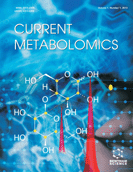Abstract
Introduction: Galium odoratum is a plant used in traditional medicine and to prepare beverages.
Objective: To study the impact of plant origin and growth conditions on the metabolite content of the plant.
Material and methods: Aerial biomass of Galium odoratum was collected from five natural populations (in situ conditions) and from controlled environment (ex situ conditions). NMR-based fingerprinting method was successfully applied to the discriminating chemical profiling of the in situ and ex situ samples.
Results: Quantitative analysis of selected phytochemicals including phenylpropranoids and iridoids showed clear differences between the plants from nature and those of controlled growth conditions as well as internal variation within the group. The metabolomic approach emphasized the decrease of the secondary metabolites pool paralleled by an increase of the carbohydrates in ex situ conditions. The quantitative HPLC-UV points out slight variations of each of the analyzed secondary metabolites between populations in natural environment, variations maintained for three populations in the controlled conditions.
Conclusion: Metabolomics approaches using 1H-NMR and HPLC are worth to consider for studying the impact of climate factors on the regulation of the phytochemical profile in relation to the origin of the plant material.
Keywords: Asperuloside, chlorogenic acid, coumarin, Galium odoratum, geniposidic acid, monotropein, NMR metabolomics, Rubiaceae.
 41
41


















